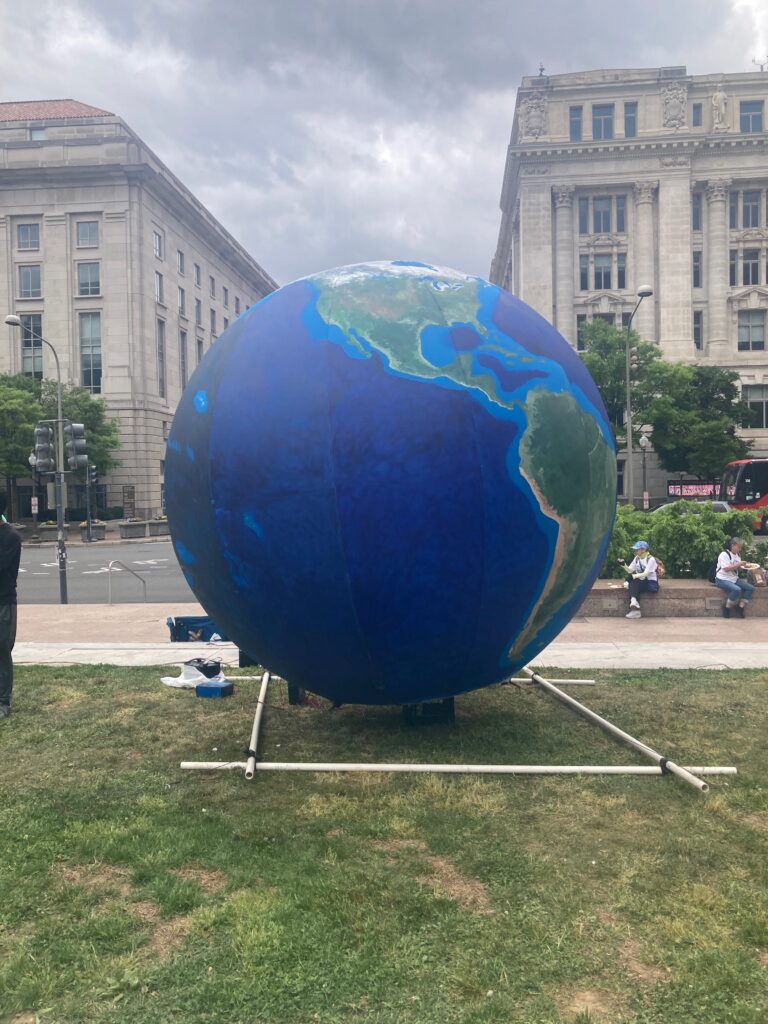
This weather – the record heat, the poor air quality – is scary and exhausting for adults. But what if you’re a kid? And what if you’re a kid who has heard it’s caused by climate change? Instead of avoiding the term climate change when talking to our kids, it’s becoming more important than ever. But there are some ways we can talk to them that are factual, don’t inspire fear, and even help empower them.
1) Present the facts without panic. Say something like “The weather is so much hotter than it’s been in the past because pollution we’re putting into the atmosphere is making the Earth warmer over many years.” Or for the air quality issues, “They are having bad wildfires in Canada and the smoke is blowing down here. It’s worse than usual because the spring was so dry. The climate is changing because of pollution we put in the atmosphere.”
2) Talk about what adults are doing to fix it. This is a big part of not sparking climate anxiety. Something like “Many adults are working to build and improve clean sources of energy that don’t make this pollution like solar and wind. Other people are pushing politicians to do even more to address the problem.” If they’re younger kids, you can point out what high schoolers and college students are doing. They feel like adults but not parental figures, which may have even more of a punch.
3) Involve your kids in making systemic change. Have them envision what a truly sustainable community would look like to them and how it’s different from your own community. Then have them write to local policy makers to tell them what they think of climate change and what they would like to change locally. This is really empowering! Check out the Cultivating Climate Justice At-Home Family Toolkit for a template and more ideas.
4) Find ways to live more sustainably in your own lives and explain the reasons behind it to your kids, like switching to solar or wind power, eating less meat, biking/walking/ taking public transit instead of driving, etc. This doesn’t replace systemic change though! Check out my book for tips (and tips on activism too).
5) Make meaning together in your actions. Find ways to be fulfilled through more environmentally friendly activities, whether that’s more time together, building relationships with neighbors or friends, more time in nature, writing stories or creating art, etc. This will be what makes your actions personally sustainable as well as environmentally sustainable!